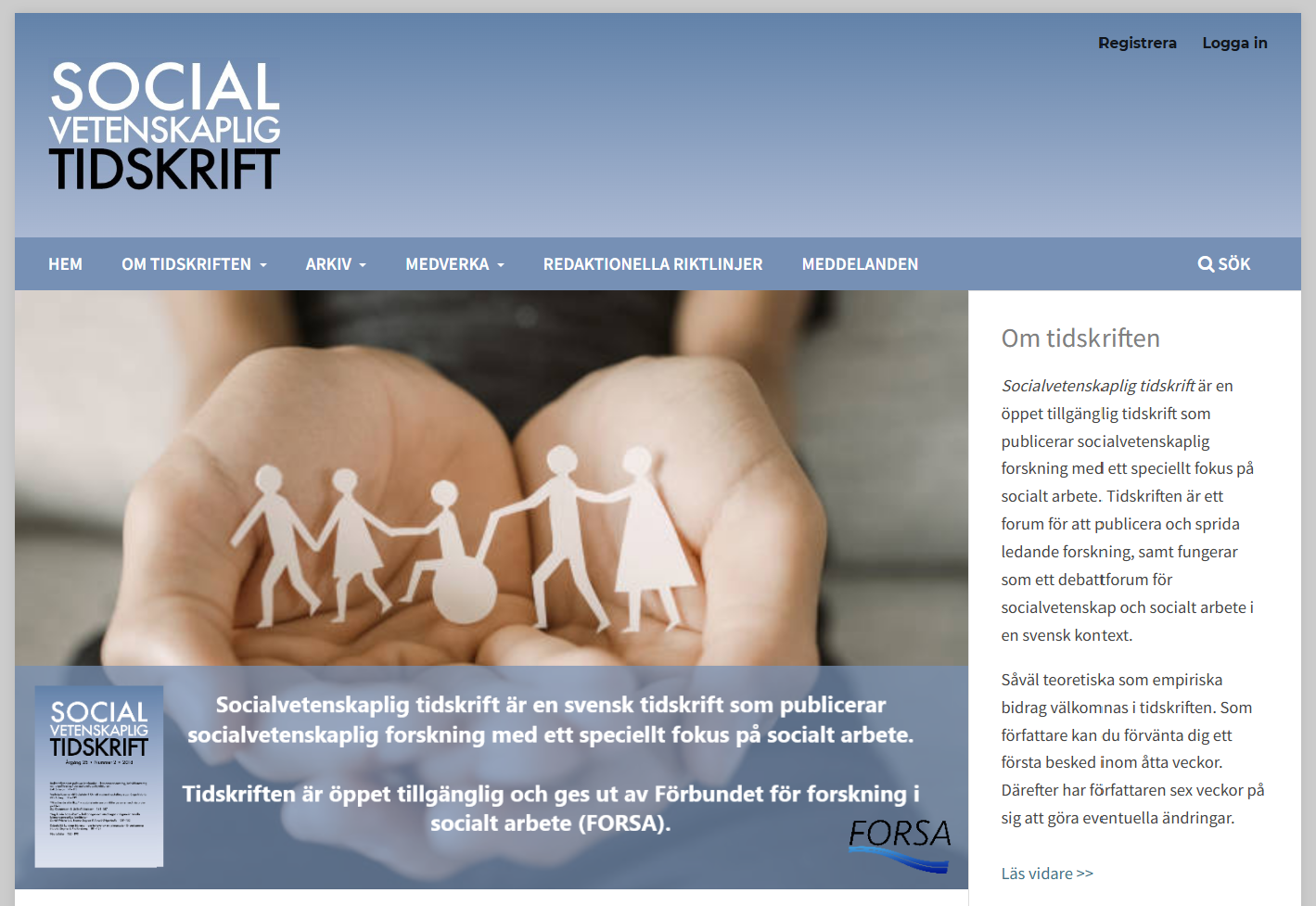Skyddar en parrelation på äldre dar mot ensamhet?
DOI:
https://doi.org/10.3384/SVT.2016.23.1.2333Abstract
Does couplehood in later life protect against loneliness?
The purpose of this article is to study the importance of intimate relationships as protection from loneliness in later life. We base the study on a survey of Swedes aged 60–90 (n=1,225) focusing on intimate relationships. The analysis considers neglected issues in ageing research on loneliness: the importance of union form, the importance of looking at relationship dissolution in terms of both widowhood and divorce, and the importance of new late-life unions (a gains perspective). We use two theoretical perspectives: the discrepancy model (realities vs. ideals), and the protection hypothesis, where the partner is generally the first and most important source of support in everyday life. The results show that a partner protects against loneliness and that union form matters: marriage provides the best protection, followed by cohabitation and living apart together (LAT). Feelings of loneliness decrease over time following a union dissolution – and, for men, more rapidly after separation than widowhood. The more one’s ideal union form differs from one’s actual union form, the more common are feelings of loneliness. Initiating a new relationship after a union dissolution protects against loneliness. The article discusses the importance of using union form instead of civil status as relationship indicators in studies of older people in late modern Sweden, and of including separation/divorce as indicators of union dissolution besides widowhood. It also stresses the importance of looking at later life not only from a loss perspective but also from a gains perspective.
Downloads
Publicerad
Referera så här
Nummer
Sektion
Licens
Allt material i Socialvetenskaplig tidskrift publiceras sedan 2022 (Vol 28 Nr 2) med omedelbar öppen tillgång (open access), under Creative Commons-licensen CC BY 4.0. Upphovsrätten till innehållet tillhör respektive författare.
Allt innehåll i tidskriften är fritt tillgängligt utan kostnad och får fritt läsas, laddas ned, kopieras, delas, skrivas ut och länkas. När innehållet används måste författare, källa och licens anges. Författaren kan fritt göra sin publicerade text tillgänglig på institutionella och internetbaserade arkiv, exempelvis sitt lärosätes digitala arkiv eller andra tjänster för detta.
Inga publiceringsavgifter tas ut vid publicering i Socialvetenskaplig tidskrift.

